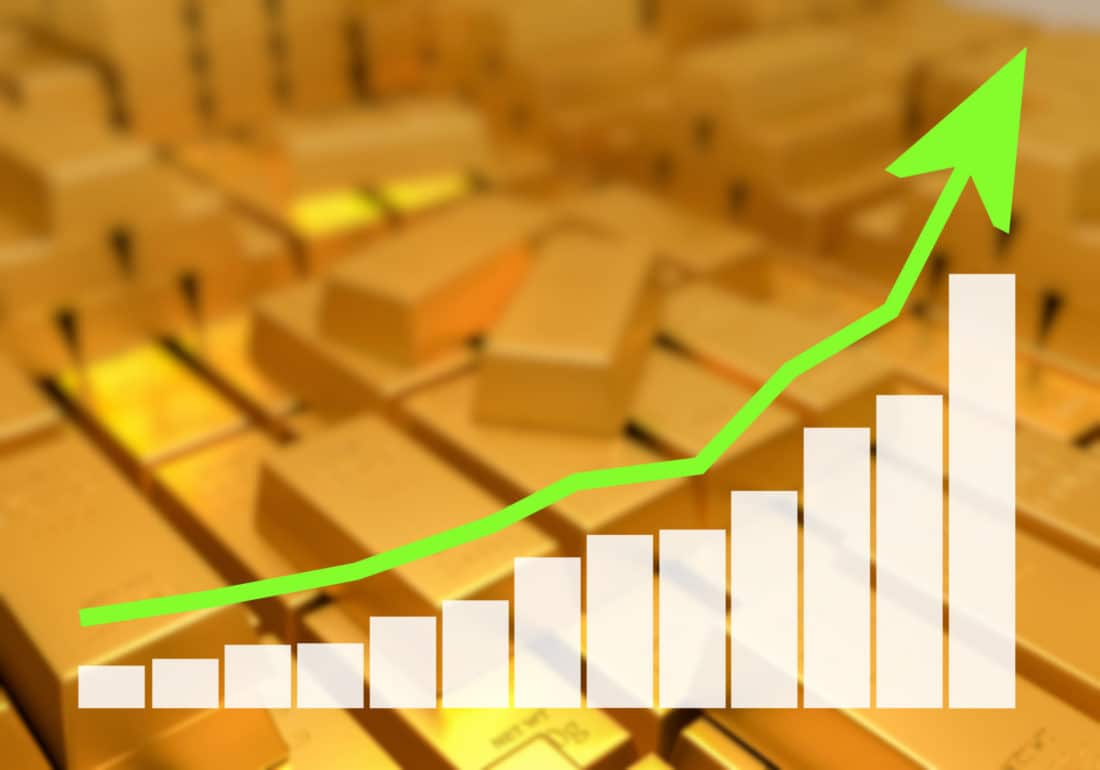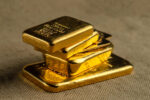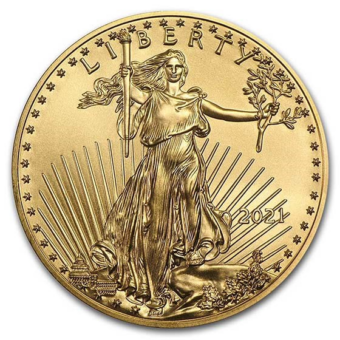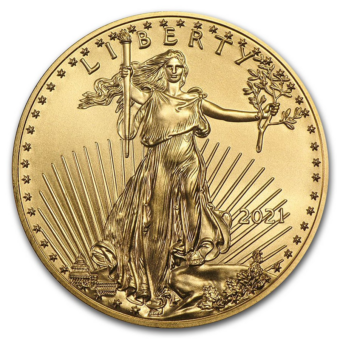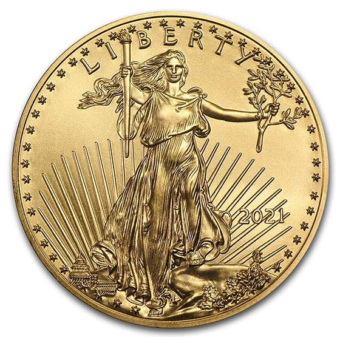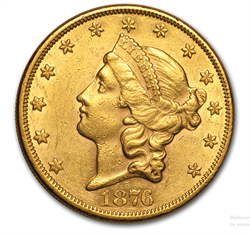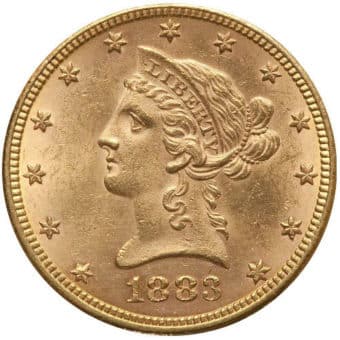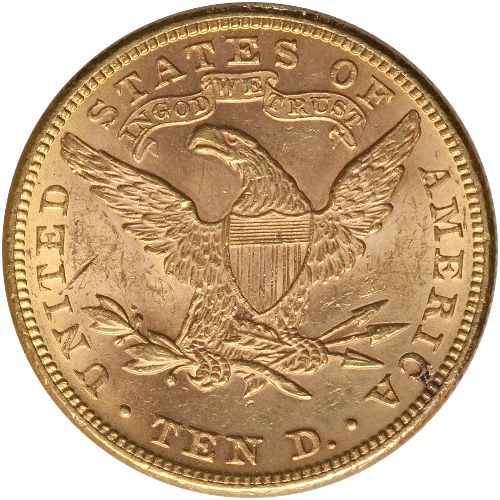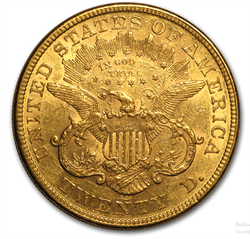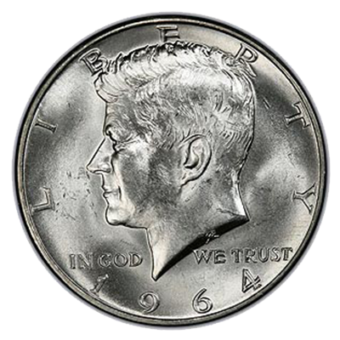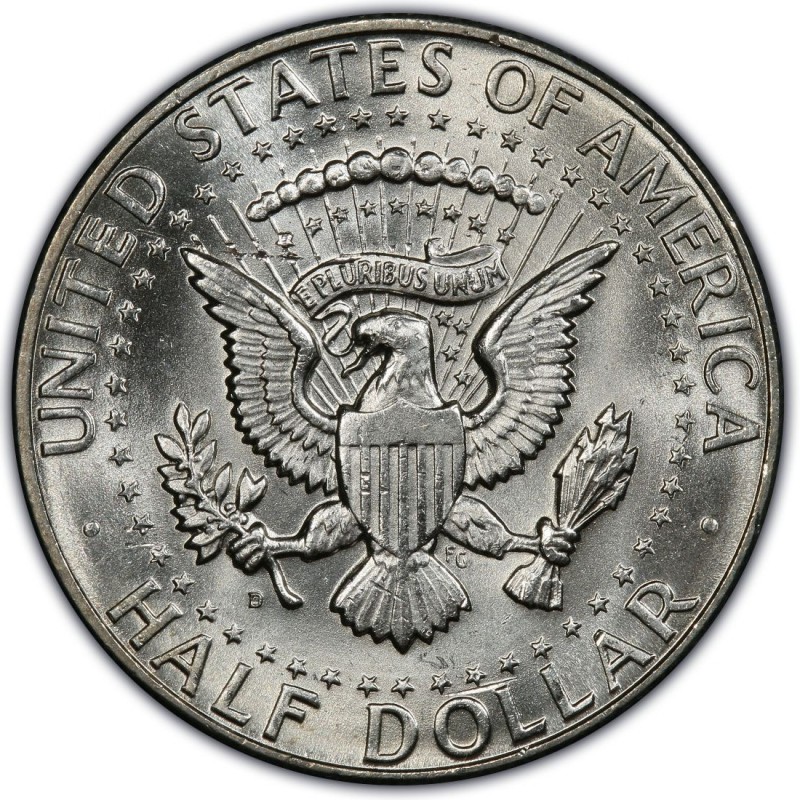The Gold Trail: A Daily Journey Through the Week's Market
Monday - 12.11.23: In early U.S. trading Monday, gold and silver prices dipped, with technical selling pressure amid deteriorating market charts. Investors eye this week's crucial U.S. economic data and Federal Reserve policy announcement. Meanwhile, China's declining consumer prices indicate a global inflation slowdown. Market focus is also on major U.S. Treasury auctions amidst concerns over sustainable debt sales. Nymex crude oil prices are lower, and the U.S. Treasury 10-year note yield is at 4.26%.
Tuesday - 12.12.23: Gold prices fluctuated, initially rising but later paring gains following the U.S. inflation data release, with the spot price stabilizing at $1,978.68 per ounce. The market was influenced by the U.S. Consumer Price Index, central bank policy meetings, and expectations of interest rate decisions. Silver prices declined slightly, falling 0.3% to $22.73 per ounce.
Wednesday - 12.13.23: Gold and silver markets showed stability with a slight uptick in gold prices to $2,057.50 and a minor decline in silver to $25.59. This trend reflected a consolidation phase amid mixed global stock market activities and key geopolitical events, including the Israel-Hamas truce expiration and OPEC-plus oil production cuts. Economic indicators like the Eurozone manufacturing PMI also influenced market sentiments, while gold bulls maintained a near-term technical advantage, targeting a price objective above $2,100.
Thursday - 12.14.23: Gold and silver prices soared in early U.S. trading Thursday, with gold reaching $2,051.90 and silver at $24.375, after the Federal Reserve's dovish stance on monetary policy indicated potential interest rate cuts in 2024. This shift led to a boost in U.S. stock indexes and a decline in the U.S. dollar index and Treasury yields. The Bank of England held its policy steady, while the European Central Bank was in session.
Friday- 12.15.23: Gold and silver prices have risen in early U.S. trading, buoyed by a dovish stance from the Federal Reserve and improved technical positions. February gold is up to $2,058.00, and March silver increased to $24.555. Stock markets in Asia and Europe were mostly higher, with U.S. futures indicating a modest opening gain. The Dow Jones set a record high Thursday. Meanwhile, China's economy showed signs of slowing, leading to a significant liquidity injection by its central bank. The U.S. dollar index is slightly up, crude oil hovers around $71.75 a barrel, and the U.S. Treasury 10-year note yield is at 3.92%.
Basel III Gold To Become a Tier One Asset
Under Basel III rules, physical gold has been reclassified from a Tier-3 asset to a Tier-1 asset, significantly changing how banks handle gold on their balance sheets. This shift allows physical gold in bullion form to be counted at 100% value for reserve purposes, unlike gold in unallocated paper contracts, which are no longer considered equal assets. This change means that banks using paper forms of gold to meet reserve requirements will need to convert those positions to physical metal or face the risk of being undercapitalized. The implementation of these rules is soon expected to have a substantial impact on the gold market, potentially increasing the demand for physical gold and influencing its pricing.
Gold Market's Steady Stance Amid Mixed U.S. Economic Indicators
Gold prices have exhibited resilience this week, consistently hovering around $2,050 per ounce, despite contrasting signals from the U.S. economy. The latest data reveals a mixed economic picture: the manufacturing sector, as measured by the S&P Global Flash U.S. manufacturing PMI, has further declined, falling to 48.2 and indicating a contraction. This contrasts with expectations of stability around 49.5. On the other hand, the service sector PMI has shown expansion, surpassing forecasts with a rise to 51.3. These opposing trends in key economic sectors create an uncertain economic outlook, yet the gold market seems unfazed by these developments. In a related update, New York Federal Reserve President John Williams, speaking on CNBC's "Squawk Box," emphasized that the Federal Reserve is not currently considering rate cuts. Instead, the central bank is focused on assessing whether its monetary policy has become restrictive enough to bring inflation down to its 2% target. Despite market optimism, as evidenced by the Dow Jones Industrial average reaching a record high and the 10-year Treasury yield dropping below 4.3%, Williams advised caution. This market sentiment was fueled by the Fed's forecast of three rate cuts next year, which traders interpreted as a sign of a potential policy shift. However, Williams stressed that it's premature to speculate about rate cuts, including the possibility of a cut as early as March, a notion suggested by futures markets.
Here’s Why Silver is Not Poor Man’s Gold
Silver's current low prices are a glaring misjudgment of its true value, argues Keith Neumeyer, CEO of First Majestic Silver. As the world's demand for silver skyrockets due to its crucial role in solar panels and electric vehicles, consuming a staggering 30% of mined supply, the market faces a significant deficit. Neumeyer's insights challenge the outdated view of silver as 'poor man's gold,' underscoring its indispensable role in modern technology and advocating for its recognition as a critical metal. With global production unable to meet soaring demand, silver emerges as a strategic investment in an increasingly tech-reliant world.
November Inflation Data: Deceptive Stability Amid Persistent Core Price Pressures
Despite a general perception of easing inflation, November's inflation data reveals a more complex reality, underscoring why the Federal Reserve remains cautious about declaring victory in the inflation battle. While overall inflation showed signs of cooling, largely driven by lower gas prices, core CPI, which excludes volatile energy and food prices, displayed persistently firm increases. This nuance in the data complicates the narrative of a smooth return to normalcy and highlights challenges for consumers, policymakers, and the Biden administration grappling with inflation-related voter discontent. The overall CPI rose only 0.1% in November, with an annual increase of 3.1%, but core inflation remains stubborn, even increasing at a 3.4% annualized pace over the last three months. This 'supercore' inflation, which strips out shelter, energy, and food prices, showed a worrying uptick in November, doubling the pace from October. While these developments are unlikely to alter the Federal Reserve's immediate rate decisions, they provide justification for delaying potential rate cuts and maintaining a cautious approach, as the fight against inflation is far from over and continues to present a complex and shifting economic landscape.
Fed Chair Powell Balances Rate Decisions with Economic Indicators
In a pivotal press conference, Federal Reserve Chair Jerome Powell confirmed the Federal Open Market Committee's (FOMC) view that the current 5.5 percent rate likely represents the peak in this cycle, hinting at potential future rate cuts. However, Powell emphasized the FOMC's openness to further hikes if economic conditions demand. This stance reflects the latest CPI and PPI data, showing encouraging signs of economic moderation, labor market balance, and progressing inflation control. Despite these positive indicators, Powell conveyed a cautious approach, acknowledging the ongoing challenges and the Fed's commitment to achieving its goals without prematurely declaring victory.
Powell also addressed the possibility of rate cuts, noting that while it's a topic of both public and internal discussion, no definitive timeline or confirmation was provided. The FOMC's decision-making, he assured, remains apolitical and solely focused on economic factors. Powell highlighted the importance of economic outlook and risk balance in determining the Federal Reserve's actions, including the potential need for prolonged or increased rates or even future hikes if strong growth exerts upward pressure on inflation. He recognized the risks of both over-tightening and under-tightening monetary policy, stressing the Fed's focus on not lagging in rate adjustments. Lastly, Powell noted that recent CPI and PPI reports played a role in updating the FOMC's projections, illustrating the Fed's responsiveness to new economic data.
Fed Signals Rate Cuts in 2024, Sparking Bullish Surge in Precious Metals
In the last FOMC meeting of 2023, the Federal Reserve maintained its benchmark interest rate but indicated a dovish shift for 2024, with projections showing likely interest rate cuts and a cooling inflation rate. This pivot is marked by a unanimous expectation among seventeen voting members for rate cuts next year, with varying degrees of reduction anticipated. The Fed forecasts core inflation peaking at 2.4% in 2024, declining further in subsequent years, alongside a slight rise in unemployment and moderate economic growth. This dovish stance is a notable shift from the September projection of a 5.1% benchmark rate. The anticipation of these rate cuts has already impacted markets, with the CME’s FedWatch tool showing a high probability of a rate cut as early as March. The reaction in financial markets was immediate and robust, with U.S. equities witnessing significant gains. Notably, precious metals, particularly gold and silver, responded with a pronounced bullish surge, reflecting a dramatic shift from recent bearish sentiments to a strongly bullish outlook in response to the Fed's policy projections.
Gold's Edge Over Bitcoin: Central Bank Support, According to Sandstorm Gold's CEO
Nolan Watson, president and CEO of Sandstorm Gold, emphasized gold's significant advantage over Bitcoin: the support from central banks and governments. In a discussion with Kitco, Watson pointed out that these entities are actively purchasing gold, not gold equities, which leads to higher gold prices but doesn't necessarily translate to increased stock prices for miners. Despite a net liquidation from gold ETFs in the past 18 months due to high interest rates, Watson foresees this trend reversing soon. He contrasts this with the crypto market, where despite Bitcoin's price increase, the sector has lost substantial market cap, highlighting gold's resilience and appeal. Sandstorm Gold, engaged in significant deal-making and facing a temporary stock decline, anticipates a production increase and a debt reduction by the end of 2024. Watson is optimistic about the future, citing upcoming projects and a more diversified portfolio, though he acknowledges the current transitional phase where the full benefits of recent acquisitions are yet to be realized.
China's Central Bank Challenges US Dollar Dominance in Currency Markets
In December 2023, China's Central Bank made a significant move in the currency markets by offloading the US dollar for three consecutive days, as reported by Reuters. This action, which included aggressive selling on Monday and Tuesday followed by a milder approach on Wednesday, was in direct response to Moody’s downgrade of the Chinese Yuan’s outlook to negative. By selling US dollars and purchasing Yuan, the state-run banks aimed to strengthen the Yuan's position against the US dollar. This strategy is part of a broader initiative by BRICS nations to challenge US dollar supremacy and promote the use of local currencies in global trade. The BRICS alliance, which includes China, is increasingly successful in this endeavor, posing potential risks to the financial stability of the US. Additionally, China is encouraging African nations to shift from the US dollar to the Yuan for cross-border transactions, with several countries considering this switch to de-dollarize their economies. This move by China and other BRICS members represents a significant shift in global financial dynamics, potentially reducing the dominance of the US dollar in international trade and finance.
Next Week’s Key Events
MONDAY, DEC. 18
- No reports scheduled.
TUESDAY, DEC. 19
- 8:30 am: Housing Starts (Nov.)
WEDNESDAY, DEC. 20
- 10:00 am: Existing Home Sales (Nov.)
THURSDAY, DEC. 21
- 8:30 am: Initial Jobless Claims (Dec. 16)
- 8:30 am: GDP (revision) (Q3)
- 8:30 am: Philadelphia Fed Manufacturing Survey (Dec.)
- 10:00 am: U.S. Leading Economic Indicators (Nov.)
FRIDAY, DEC. 22
- 8:30 am: Durable Goods Orders (Nov.)
- 8:30 am: PCE index (Nov.)
- 9:45 am: S&P flash U.S. Services PMI (Dec.)
- 9:45 am: S&P flash U.S. Manufacturing PMI (Dec.)
- 10:00 am: New Home Sales (Nov.)
- 10:00 am: Consumer Sentiment (Dec.)
IMPACT ON GOLD AND SILVER MARKETS:
Housing Starts
This report indicates the number of new residential construction projects begun in November. Higher housing starts suggest economic strength, potentially leading to a stronger dollar and lower gold and silver prices as investors seek riskier assets. Conversely, lower housing starts could increase gold and silver's appeal as safe-haven assets.
Existing Home Sales
This measures the completed transactions of existing homes. Increased sales typically signal a healthy economy, possibly leading to a stronger dollar and lower precious metal prices. If the sales are weak, it might raise concerns about economic health, boosting gold and silver as defensive investments.
Initial Jobless Claims
This weekly report tracks the number of individuals who filed for unemployment insurance for the first time. Rising jobless claims can signal economic distress, potentially raising gold and silver prices as safe havens. Lower claims often indicate a strong labor market, which might strengthen the dollar and pressure gold and silver prices.
GDP
Gross Domestic Product (GDP) measures the overall economic output. An upward revision might indicate a stronger economy, potentially leading to a stronger dollar and lower gold and silver prices. A downward revision can have the opposite effect, making gold and silver more attractive.
Philadelphia Fed Manufacturing Survey
This survey gives insights into the manufacturing sector's health in the Philadelphia region. Positive data can signal economic strength, potentially decreasing gold and silver prices, while negative data can lead to increased demand for these metals as safe havens.
U.S. Leading Economic Indicators
This composite index forecasts future economic activity. Positive indicators might strengthen the dollar and lower demand for gold and silver. Negative data could increase their appeal as protection against economic uncertainty.
Durable Goods Orders
This report measures orders for goods with a life expectancy of more than three years. Increased orders can indicate economic strength, possibly leading to a stronger dollar and lower gold and silver prices. A decline may signal economic weakness, boosting demand for these metals.
PCE index
The Personal Consumption Expenditures Price Index tracks consumer spending and is a key inflation indicator. Higher inflation can lead to increased gold and silver prices as they are often seen as hedges against inflation. Lower inflation might reduce their appeal.
S&P flash U.S. Services PMI and Manufacturing PMI
These Purchasing Managers' Indexes indicate the economic health of the services and manufacturing sectors. Higher readings can signal a strong economy, potentially reducing demand for gold and silver. Lower readings can increase their appeal as safe-haven assets.
New Home Sales
This report measures the sale of newly constructed homes. Similar to existing home sales, an increase can suggest economic strength, potentially lowering gold and silver prices, while a decrease can enhance their appeal.
Consumer Sentiment
This index measures consumers' attitudes and expectations about the U.S. economy. Higher consumer confidence can lead to a stronger dollar and lower gold and silver prices, as consumers might prefer riskier assets. Lower confidence can increase demand for these metals as safe-haven investments.


